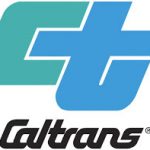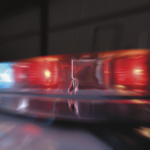Although the table for directors was virtually empty, the Idyllwild Water District’s conference room was full of customers concerned about the district’s rate hike proposal.
Ironically, more former directors — John Cook, Mike Frietas and Vic Sirkin — were present than current board members. The IWD board has one vacancy, and directors Dr. Charles “Chip” Schelly and Peter Szabadi were absent. Directors Steve Kunkle and David Hunt attended the workshop.
Without a quorum, General Manager Jack Hoagland told the crowd that the rate workshop could still be held, but no board actions could be taken during the session. Hoagland and Greg Henry, the consultant with NBS, the firm that conducted the rate analysis, led the presentation and answered questions from the public throughout the evening.
Ballot
The procedure to raise rates or fees for most California local governments is subject to Proposition 218, which sets the process for the public to be notified, requires the reasoning and analysis justifying the proposed increase, and allows for the public or customers to express approval or reject the idea.
Almost immediately, Sue Nash, an IWD customer and lawyer, challenged the district on its failure to include an official ballot in the notice of the proposed rate increase. She submitted letters to the board explaining her objection and requesting that the June 20 public hearing be canceled.
Nash based her challenge on California’s Constitution Article XIII D section 4, which addresses the procedures for increases in assessments and clearly refers to ballots. However, Propostion 218, enacted in 1996, “created a new category of fees and charges commonly referred to as ‘property related fees.’”
The state’s Legislative Analyst’s Office has stated that the language of Proposition 218 does not directly define property-related fees; but this type of fee does include water, sewer and trash. Consequently, Henry responded to Nash that a notice, such as IWD mailed to property owners and customers, was what the state courts have found sufficient for fee increases.
Cost analysis
The rate increase was predicated on NBS’s projection of future revenue needed to operate the water and sewer districts, Henry said. A multiplier, based on recent increases for different types of expenses, was applied to the operating costs such as salaries and benefits, and utilities.
Also, based on direction from the general manager and board, NBS assumed an annual capital-improvement budget of $400,000 for water and $300,000 for sewer.
This resulted in an estimate that water revenue would need to grow from $1.27 million this year to $1.66 million in fiscal year 2022-23. The sewer revenue would also need to increase $117,000, from $630,000 to $747,000.
This is just the revenue needed from fees. The property-tax revenue is separate, as are the stand-by fees.
But the board also wanted to increase the proportion of revenue it collected from its base monthly fee as opposed to the actual water-usage fee. The result is a complicated set of rate changes that can vary from customer to customer depending upon their meter size and water used.
The commercial rates, as well as for Idyllwild Arts Academy, are simpler and no water tiers are applied to these usages.
Objection
Since the need to increase the rates derives from the need to grow revenues in order to provide these services, several customers suggested, strongly, that IWD should first look to options that would reduce current operating costs before asking the public for more money.
For example, Henry said the capital program for water includes replacing more than 21,000 feet of pipe over this period. The cost would be about $200 per foot, when a contractor performed the work, and $120 per foot, when the district used its own staff.
Several people urged Hoagland to review the plan and install more pipe with in-house staff. While he did not object, he noted that staff could be interrupted completing the pipeline replacement if an emergency occurs elsewhere. Consequently, for projects in the commercial district, he prefers to hire a contractor who can start and finish the job within a specified period.
When asked if residential customers were subsidizing commercial customers on these large pipeline projects, Henry replied that commercial customers tend to use more water and, therefore, pay their share through the usage fees.
Reserves
IWD’s combined reserves are currently $3.7 million, according to Chief Finance Officer Hosny Shouman. This spring, the board lowered its goal to $4.1 million from $5 million for combined for water and sewer reserves.
The district could use more of its reserves for the proposed construction, but Henry warned that increases the risk to the district and customers if an unexpected catastrophe occurred.
Waste treatment plant
One major unknown is the remaining operating life of IWD’s waste-treatment plant. Hoagland has expressed concerns about the life expectancy of the plant almost since arriving at IWD.
Earlier this year, an outside consultant suggested replacement costs in the range of $4 million. Hoagland has reviewed these plans and believes these estimates are too high. He opined that $2 million is a better estimate.
While the rate analysis assumed $300,000 annually for sewer capital projects, the IWD budget proposal indicates that the sewer capital-improvement program will be closer to $75,000 annually.
If the treatment plant were to require unexpected and sudden work, the source of funding would likely be a combination of sources, according to Henry. Reserves would be available, but not likely sufficient for a sewer project that large. Therefore, debt would have to be investigated, too.










